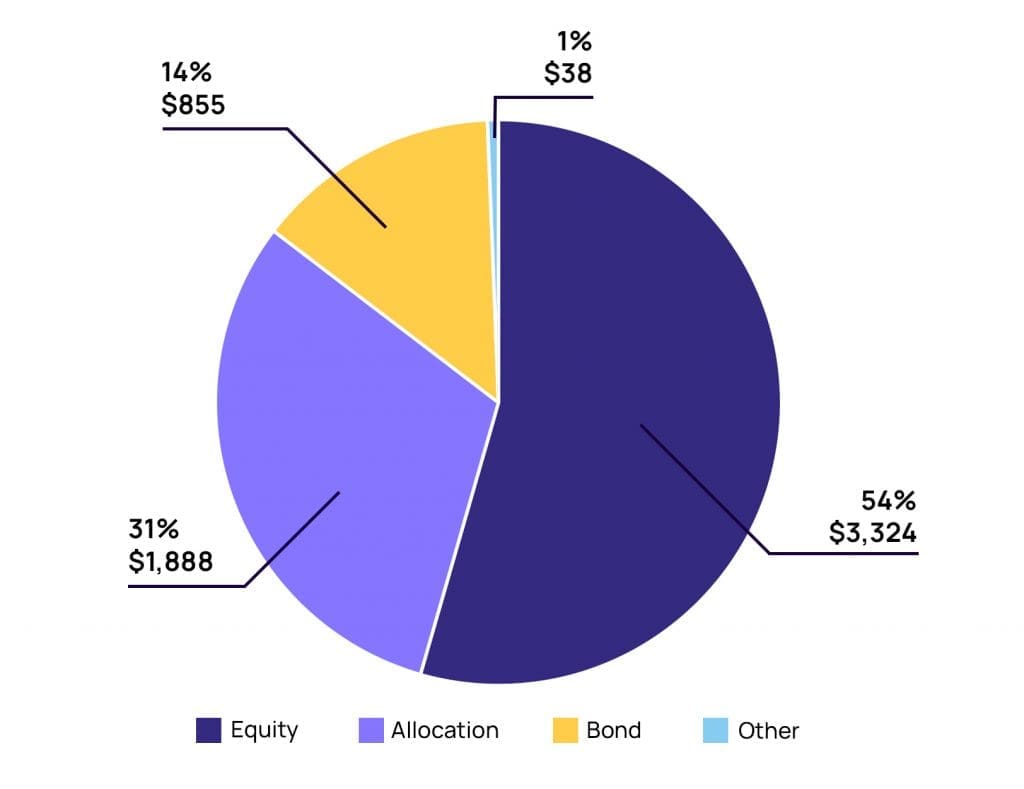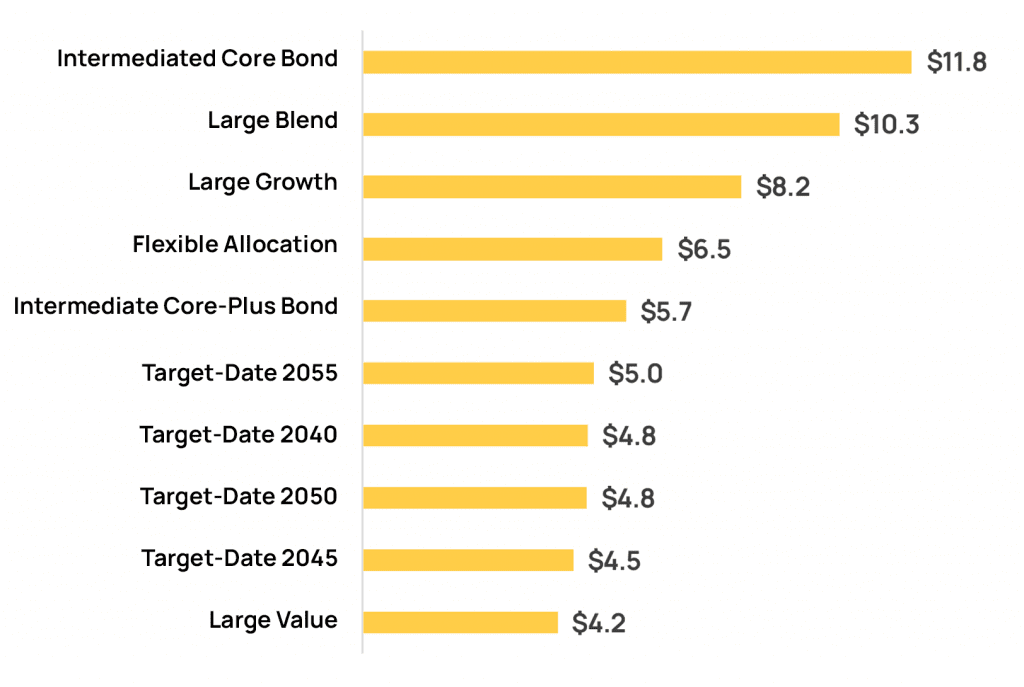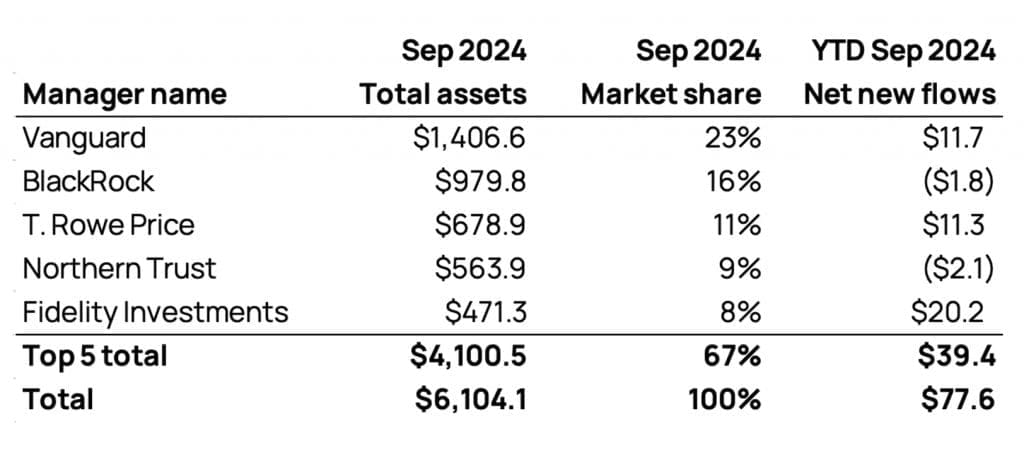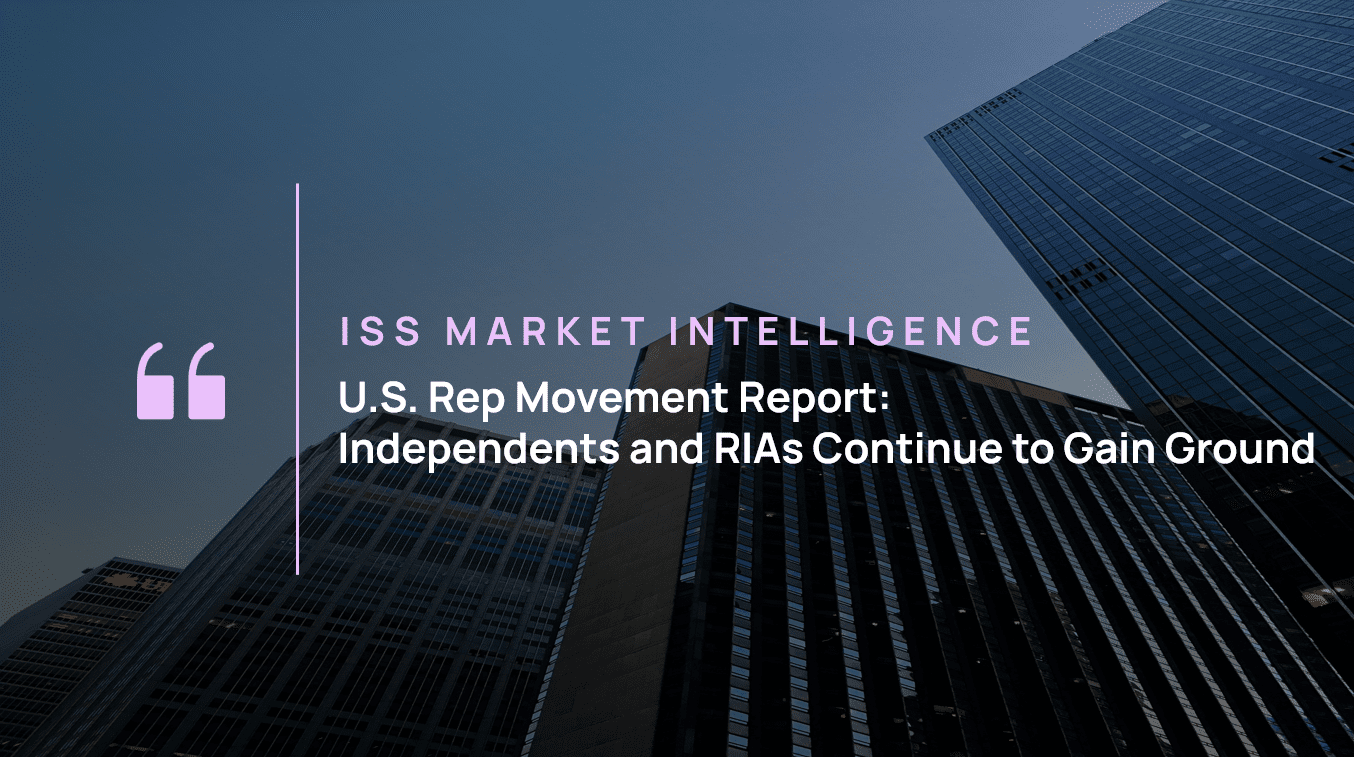Mutual funds remain a massive source of assets, with nearly US$50 trillion in assets under management globally. Recent years, however, have seen the legacy vehicle beset by a number of competitors. Low-cost exposure and intraday liquidity have propelled the fortunes of the ETF in retail markets. Active and passive ETFs in the United States gathered a record US$1 trillion in net new flows in 2024. Collective investment trusts (CITs), meanwhile, have aggressively pursued opportunities within retirement channels that were historically built around, and provided greater protection for, mutual funds. Data from MarketPulse, powered by Simfund, an industry-leading view of institutional and retail financial data, found assets in CITs crossed US$6.1 trillion in September 2024.
CITs are pooled vehicles that are available to qualified retirement plans. They have grown in popularity thanks to their ability to help save on costs in what is already an extremely cost-focused market. CITs operate under banking regulation as opposed to SEC regulation like the Investment Company Act of 1940. This results in lower registration costs as well as the ability to offer customized fees, which has proven exceptionally beneficial to large retirement plans that can use their scale to negotiate more competitive fee schedules.
The largest portion of CIT assets were in equity strategies, which accounted for 54% of assets as of September 2024. Figure 1 displays market share by major asset class. The vehicle’s equity assets were most heavily in passive strategies at US$2.4 trillion, in line with the importance that low costs have had on the vehicle’s ascendance.
Figure 1: Equity Strategies Account for Majority of CIT Assets
CIT market share and assets in billions of US dollars, September 2024

Note: Includes fund of funds. Other includes money market, alternative, and commodity strategies.
The vehicle’s central role in retirement plans has also fueled significant investment in allocation strategies, driven primarily by target-date funds. Allocation strategies in CITs gathered inflows of US$33.8 billion in the first nine months of 2024, surpassing the US$25.4 billion pulled in by equity CITs. Target-date groupings take up a critical portion of the rankings of top inflow CIT categories on a quarterly basis. Core bond strategies led on a category level in the first nine months of 2024, followed closely by large-cap equity exposure, as seen in Figure 2, but target-date and allocation categories were able to account for half of the spots in the YTD rankings.
Figure 2: Bonds lead CIT flows in 2024, Supported by Equity and Allocation Stratgeies
Net new flows in CIT by category in billions of US dollars, YTD September 2024

Note: Includes fund of funds.
The importance of cost in driving assets to CITs is further reflected in the rankings of largest CIT managers. Vanguard and BlackRock, leading providers of very low-cost ETFs in the retail market, together accounted for nearly 40% of CIT assets in September 2024, as seen in Figure 3. Fidelity ultimately led flows in the year-to-date period at US$20.2 billion, propelled by investments in domestic and emerging market equity options. Geode Capital Management and Vanguard followed with net deposits of US$18.5 billion and US$11.7 billion, respectively.
Figure 3. Cost Cutters and TDF Providers Top CIT Rankings
CIT assets and net new flows in billions of US dollars, September 2024

Note: Includes fund of funds.
These rankings additionally underline the central role of target-date strategies. Vanguard, Fidelity, and T. Rowe Price are among the five largest providers of both CITs and target-date mutual funds. Firms have built off of their advantages in life cycle funds, converting mutual fund assets into CITs or encouraging existing clients to move assets into options with more competitive fees. This has occurred most strongly within the largest plans. Data from ISS MI MarketPro Retirement, powered by Brightscope Defined Contribution Plan database, for example, has found that among the 20 largest defined contribution plans, all had the entirety of target-date assets in CITs.
The extensive focus on cost in defined contribution markets will continue to benefit the development of CITs. The reintroduction of legislation that would allow CITs to be offered to 403(b) plans further opens new potential markets for the structure. While these plans predominantly offered to public educators and non-profit workers represent a small fraction of the assets held in 401(k) plans, CIT providers will be quick to move and establish central roles in these new frontiers.
Explore how MarketPulse, powered by Simfund can improve your product development strategies through a comprehensive look at investment vehicle data, including mutual funds, ETFs, CITs, and separate accounts.




